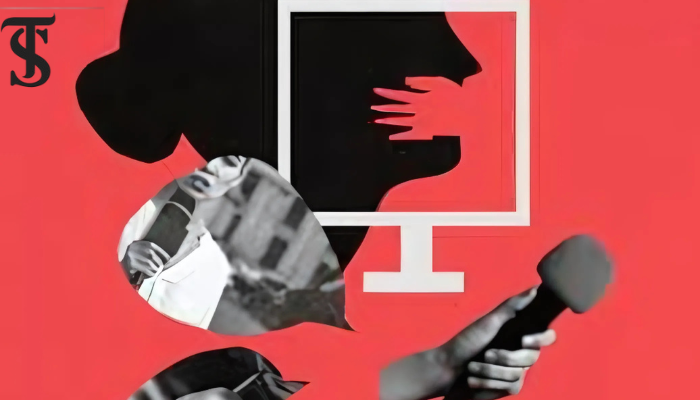How Has Learning Taken a Backseat in Pakistan?

- Systemic Issues: Pakistan’s education system is underfunded, with only 2% of GDP allocated, fostering a culture that prioritizes rote memorization and grades over critical thinking.
- Cramming Culture: Emphasis on memorization rather than understanding hinders students' creativity and problem-solving skills, leaving them unprepared for modern challenges.
- Gender Inequality: Educational opportunities for girls are limited due to cultural norms, with a significant enrollment gap between boys and girls that affects learning equity.
Before we dive right into the core of this burning question, one that is fundamental to any nation’s strong roots and credibility, let’s decipher the term ‘learning.’ Learning is often confused with simply acquiring information, but in my opinion, it goes beyond that. True learning involves not only gaining surface-level knowledge but also comprehending its practical applications. Thus, learning encompasses both theoretical and practical understanding of a subject. This distinction is key to understanding why the current state of education in Pakistan is so concerning.
Is Learning Truly Being Sidelined in Pakistan?
As a teacher who has closely observed the education system in Pakistan, I am heartbroken to see students chasing good grades at the expense of genuine learning. Students often prioritize grades over true understanding, but who is to blame? The students? The teachers? The institutions? Or a flawed system that perpetuates this mindset?
The Horrendous Systematic Issues:
One major culprit is the education system itself. Students fear disappointing their teachers and parents, focusing solely on grades to the detriment of real learning. Meanwhile, teachers feel the pressure to push students towards high marks, as they too are constrained by administrative expectations. This pressure trickles down from administrators to teachers and students, ultimately rooted in a flawed system.
A key systemic issue is Pakistan’s inadequate investment in education. With only about 2% of its GDP allocated to education—far below the global recommended minimum of 4-6%— the system is severely underfunded. This lack of investment affects everything from teacher training to classroom resources, exacerbating a culture that prioritizes rote memorization over deep understanding. For comparison, countries like India and Bangladesh allocate 3% and 2.5% of their GDP to education, respectively—still below ideal levels but higher than Pakistan’s investment.
The Perpetual Cycle of Corruption:
Corruption further exacerbates these systemic issues. It begins with policymakers and government officials and ends with students as both victims and participants in this broken system. The result is alarming: according to recent studies, 75% of children in Pakistan are not proficient in reading by the end of primary school. This lack of foundational skills severely hampers students’ ability to succeed later in life.
The Cramming Culture:
The core of the problem lies in Pakistan’s traditional educational framework, which emphasizes memorization over critical thinking. In many schools, students are expected to cram information without understanding the underlying concepts. This practice stifles creativity and discourages independent thought. According to the Pakistan Education Statistics Report, 65% of students do not meet minimum proficiency levels in mathematics and literacy by the end of primary school.
In countries that prioritize critical thinking and problem-solving in their curricula, such as Finland or South Korea, educational outcomes are markedly better. By contrast, Pakistan remains entrenched in outdated methods, leaving students ill-prepared for the challenges of the modern world.
Out-of-School Children and Learning Gaps:
Nearly 27% of primary school-aged children in Pakistan are not enrolled in school. This staggering number highlights a critical issue that further sidelines learning in the country: a significant portion of the population is denied even basic educational opportunities. Those who do attend school often find themselves in overcrowded classrooms with undertrained teachers, which creates additional barriers to meaningful learning.
Efforts by non-governmental organizations (NGOs), such as The Citizens Foundation (TCF), aim to address this issue by providing quality education to underprivileged children. However, these efforts alone cannot overcome the vast educational deficit caused by the government’s failure to prioritize education.
Gender Inequality in Education:
A significant aspect of the learning crisis in Pakistan is gender inequality. Cultural norms and societal expectations often limit educational opportunities for girls. According to the Pakistan Bureau of Statistics, enrollment rates for girls in primary education are approximately 73%, compared to 81% for boys. This gap widens as students’ progress to secondary education, where many girls drop out due to factors like early marriage, household responsibilities, and societal pressure.
Even when girls attend school, they often receive a lower quality of education. Many schools lack female teachers, and those who do teach may not be adequately trained to address the unique challenges girls face. According to UNESCO, girls in Pakistan are 2.5 times more likely than boys to never attend school. This inequity compounds learning gaps, as girls are denied the tools needed to succeed academically and in life.
Addressing the Root Causes of the Learning Crisis:
Taking into consideration my personal experience in the education sector and the data provided above, the answer to how learning has taken a backseat in Pakistan becomes clear. The primary issue is not a lack of potential among students, but rather a flawed system that fails to foster critical thinking and practical knowledge.
To address these challenges, the government must prioritize education by significantly increasing funding. Policymakers must invest in teacher training and curriculum reform, shifting the focus away from rote memorization toward skills that prepare students for a rapidly changing world. Additionally, addressing gender inequality by ensuring that girls receive the same opportunities as boys is crucial to building a more inclusive and equitable education system.
Measures to take:
The path forward is clear: education must become a national priority. Policymakers must not only increase funding but also reform the curriculum to encourage critical thinking and problem-solving. At the same time, efforts must be made to close the gender gap and ensure that every child, regardless of their background, has the opportunity to learn and thrive. Only then can Pakistan’s education system begin to focus on true learning rather than superficial achievements like grades.
Conclusion
Learning has indeed taken a backseat in Pakistan, largely due to systemic issues, the cramming culture, and widespread inequality. The country’s underfunded education system continues to produce students who lack the critical thinking and practical skills needed to succeed in today’s world. Out-of-school children and gender disparity further complicate the issue.
Bushra Zaheer Bhatti
The author aims to explore the complexities of literature, language, and society. With a Bachelor's in English, Linguistics, and Literature, she brings a passion for critical analysis, offering thought-provoking content that reflects language's profound influence on culture and perspectives.






keep it up, looking forward for more relevant writings